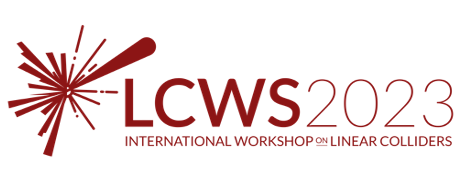Conveners
Accelerator: Sustainability & Applications
- Emma Snively (SLAC)
Accelerator: Sustainability & Applications
- Emma Snively (SLAC)
The successful continuation of high energy physics probing regimes of ever-higher energies using conventional experimental methods is unsustainable both fiscally and environmentally. The already visible effects of climate change put additional pressure on the HEP community to develop techniques to mitigate the carbon footprint of large-scale collider experiments through direct and indirect...
As the next generation of large accelerator-based facilities are being considered at the Snowmass 2021 study high priority has to be given to environmental sustainability including energy consumption, natural resource use and the environmental impact of effluents. Typically, increased performance - higher beam energies and intensities - of proposed new facilities have come with increased...
Appropriately designed, the ILC facility could offer unique applications beyond the main collider program. This contribution will review the possibilities to extract electron and/or positron bunches from the main beam, and focus in particular on their use for a LUXE-type experiment, which would allow strong-field QED to be probed in regimes relevant multi-TeV colliders and for astrophysical...
High Q cavities are an essential component for rf pulse compression. In order to reduce cavity losses and increase compatibility with applications requiring long fill times, we are interested in developing compact superconducting cavities that operate at high temperature (~80 K). We are designing and planning to measure an RF cavity at 11.424 GHz that will include High Temperature...
Recent efforts at SLAC aim at developing high-power accelerators powered by compact, high-efficiency rf sources such as klystrons and Inductive output tubes (IOT). In particular, a high-efficiency IOT is an electron-beam-driven RF source employed in the UHF band that offers high efficiency at variable output power levels. Due to the improved linearity, high efficiency, and reduced size, it is...
We present design of a normal conducting, high efficiency linac that would provide a CW beam of 1 MW
electrons at 1 MeV energy for various environmental applications. For example, when a flowing sheet of
wastewater is exposed to such a beam, various radiation-induced reactants are generated that lead to water
purification by decomposing the chemical and biological pollutants therein. The...
Accelerator technology developed for future collider designs can form the basis for components in a broad range of medical accelerator applications, enabling new treatments like Very High Energy Electron (VHEE) therapy and new high-speed beam scanning systems for proton therapy. For example, the large aperture of the proposed C3 linac design is optimized to transport long and high charge...
Permanent magnet technology is a path to reducing energy usage and carbon emissions for accelerator facilities. This talk presents some examples of where PM technology has been adopted in place of electromagnets, and highlights the advantages and disadvantages of this technology.



